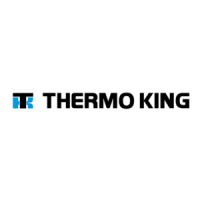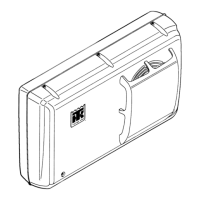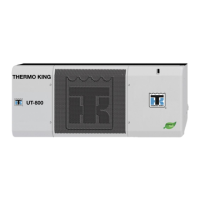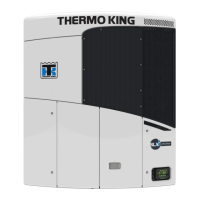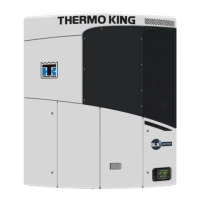MP-3000 Controller
60
Chill Loads: (Setpoint at -9.9 C
[14.1 F] and Above)
The unit operates on Cool with Modulation and
Heat to provide accurate control of chill loads.
During Cool with Modulation, the controller uses
a proportional-integral derivative (PID)
algorithm, a coil/dehumidify solenoid valve and a
stepper motor valve to provide accurate control of
the container temperature in direct response to
load demand.
The coil/dehumidify solenoid valve controls the
refrigerant flow to one of the evaporator
distributors. Closing (energizing) the valve
reduces the size of the evaporator coil providing
cooling by 50%. The controller energizes (closes)
the coil/dehumidify solenoid valve when the
modulation capacity is 20% or less. The controller
keeps the valve closed until the modulation
capacity increases to 25%.
The stepper motor valve is installed in the suction
line and controls the amount of refrigerant
returning to the compressor. The valve opens and
closes in response to a controller voltage signal
based on a control temperature differential. The
controller uses the setpoint temperature, supply
air sensor temperature (left and/or right hand
sensors) and pull-down rate for the last 10
seconds, last 20 seconds and last 180 seconds to
calculate the control temperature differential.
Supply Air Sensor Control
Temperature control accuracy and protection
against frost damage is provided by using two
separate sensors (left hand and right hand) to
determine the supply temperature used to
calculate the control temperature differential:
• At setpoints below -1 C (30 F), the controller
uses the lowest supply air sensor temperature.
• At setpoints above 0 C (32 F), the controller
uses the average temperature of the left hand
and right hand supply air sensors.
• At setpoints between -1 C and 0 C (30 F and
32 F), the controller uses a sliding temperature
scale from the lowest supply air sensor
temperature to the average temperature of the
left hand and right hand supply air sensors.
If one supply air sensor fails, the controller uses
the temperature of the other supply air sensor for
temperature control. If both supply air sensors
fail, the controller uses the temperature of the
return air sensor plus an offset for temperature
control.
Temperature Control Accuracy and Frost
Protection
The PID algorithm generally minimizes container
temperature fluctuations to ± 0.1 C (± 0.2 F).
Additional frost protections is provided by pulsing
the electric heaters on and off to increase the
supply air temperature if the return air
temperature decreases to within 0.3 C (0.5 F) of
setpoint. The controller pulses the heater on for
2 to 60 seconds every 60 seconds. The amount of
on time depends on the amount of heat required to
provide frost protection.
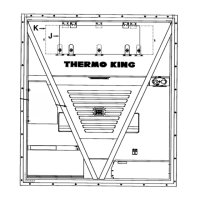
